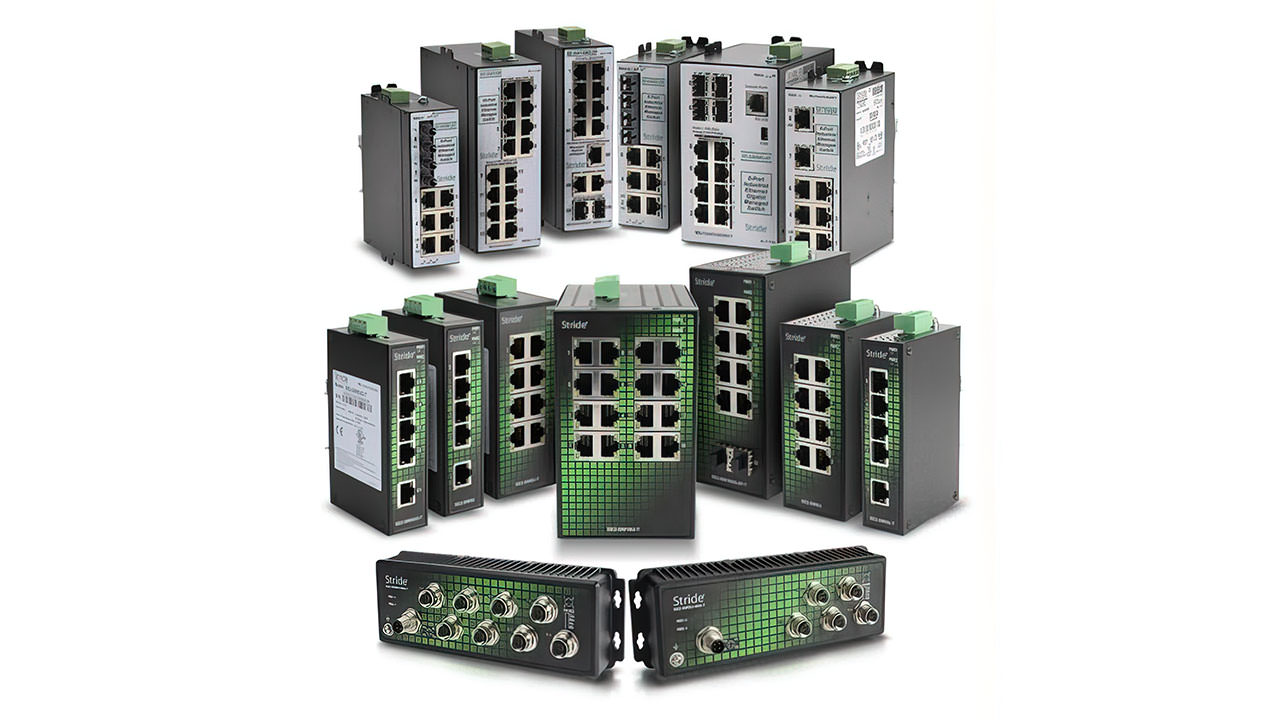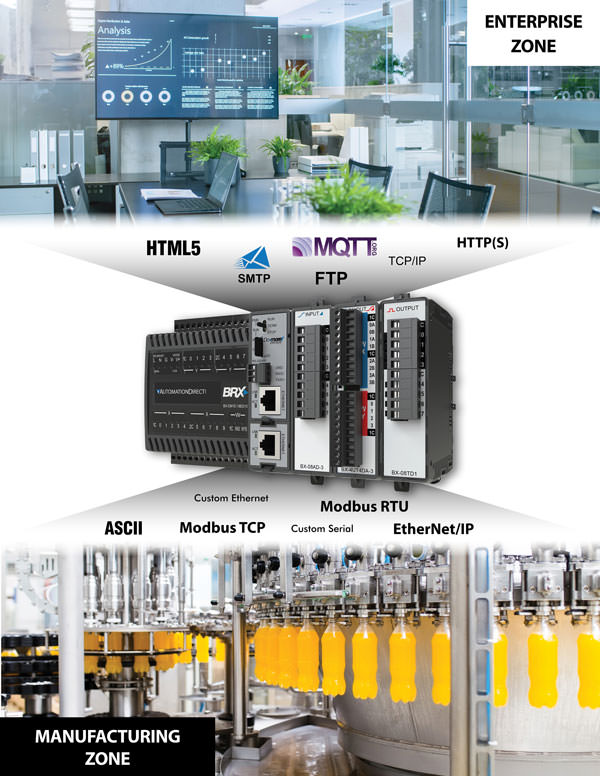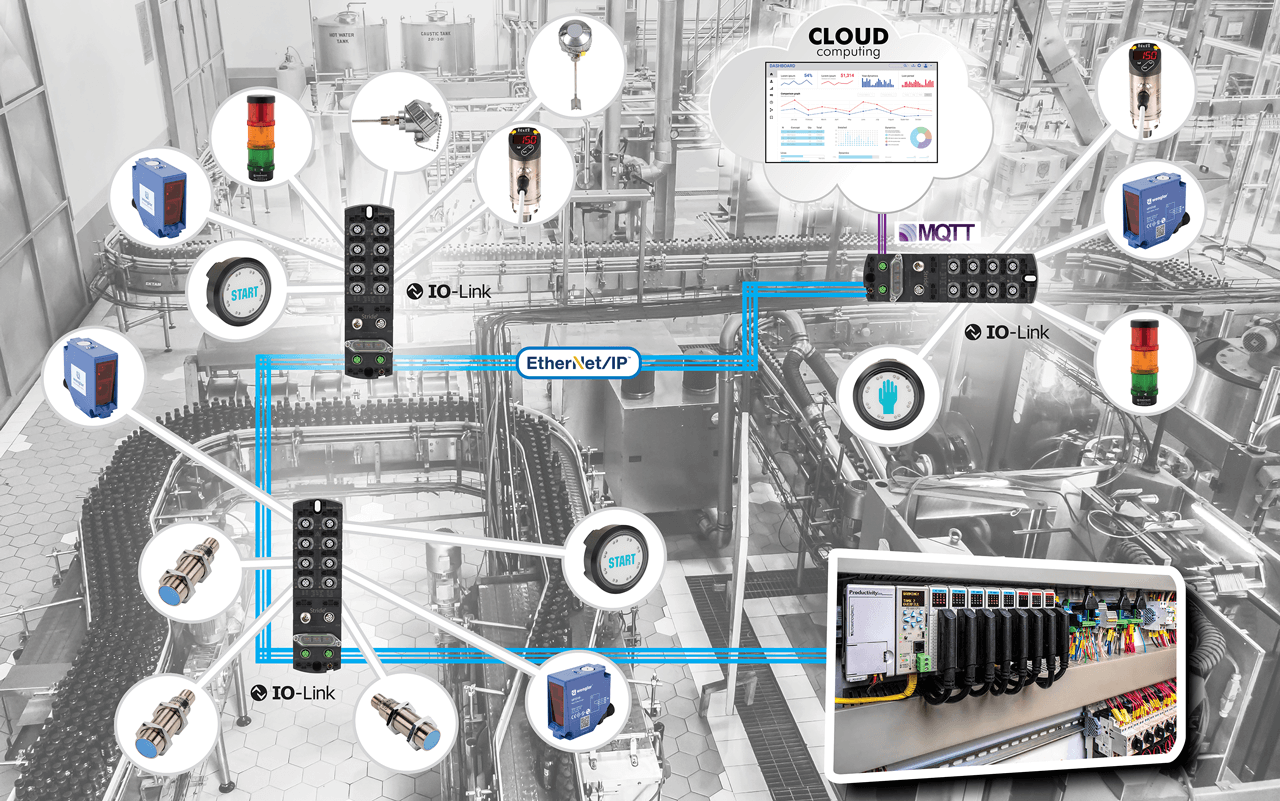TechnologyJuly 20, 2023
Advancing Industrial Ethernet creates choices for networking

As industrial Ethernet implementations continue to increase, designers have better choices for higher speeds and factory-friendly form factors. Ethernet is now the preferred industrial networking technology for discrete manufacturing, and it is also advancing in the process industries.
By any measure, Ethernet digital communications technology is a multi-decade and still-evolving success story. Developed in the 1970s and standardized in the 1980s, Ethernet has marched forward from a performance standpoint, achieving great economies of scale, and supporting countless commercial, consumer, and industrial applications.
This third aspect—suitability of Ethernet for industrial use—was never a sure bet. Early iterations of the technology had sufficient speed for general applications, but lacked the performance and determinism demanded by high-speed and critical applications. Another significant challenge was that the form factor was not convenient or economical to install on machines or in factories.
Therefore, many designers remained reliant on basic serial communications and dedicated fieldbuses. However, the situation has changed significantly over recent years as most issues with using Ethernet for industrial applications have been solved, and improvements are continuing.
To a great extent, Ethernet is now the preferred industrial networking technology for discrete manufacturing, and it is also advancing in the process industries. More recent developments are extending the usefulness of Ethernet for all types of industrial applications.
Digital communication progress in the factory

Ethernet has progressed from a commercial technology into a fundamental way of interconnecting all types of industrial field devices, controllers, and on-site or cloud-based computing resources.
Commercial networking grew from a need to connect multiple computers, and related digital devices like printers, with each other. Industrial networking has many of the same needs, but faces additional challenges in terms of performance, installation means and methods, and other specialized requirements.
Any digital network specifically designed for communication among machine and factory automation devices and input/output (I/O) signaling came to be known as a fieldbus. The earliest examples used RS232/422/485 serial communications standards for point-to-point and multi-drop communications. The multiconductor cable media provided adequate communication speed and useful installation distances, adequate for industrial environments.
Some vendors used proprietary protocols over serial media, but eventually the open Modbus protocol emerged as a leading standard. Other closed serial protocols developed over the years, and some became more open. Collectively, serial-based fieldbuses were used to do most of the heavy-lifting for industrial plants, at least from controllers down to field-level edge devices.
As Ethernet gained acceptance and capabilities as an expanding commercial off-the-shelf (COTS) technology, industrial users were eager to take advantage of its many benefits. Initially, commercial-grade Ethernet cabling and essential devices like switches made the most sense for connecting programmable logic controllers (PLCs) with higher-level PCs and servers running human-machine interface (HMI) and supervisory control and data acquisition (SCADA) applications. Eventually, a number of advances made Ethernet suitable for connecting cloud resources, PCs, and PLCs down to plant-floor-level devices.
Industrializing a network
Today, almost every PLC and HMI includes on-board or optional Ethernet support. Similarly, intelligent field devices used for factory automation—such as variable frequency drives (VFDs), servo drives, and I/O gateways—are increasingly available with native Ethernet connectivity. Smart analytical devices, and even some more basic field instrumentation, also offer Ethernet support.
Ethernet is a leading way to improve communication bandwidth and connectivity among all sorts of devices—if it can be installed practically for industrial applications. Vendors have responded to user preferences with a variety of products specifically designed to improve the usability of Ethernet on machines and in factories.
Ruggedized installation media
While it is possible to use commercial- and consumer-grade components for industrial installations, the results can be less than ideal. Instead, designers should choose products built to withstand the environmental and electrical noise conditions found near operating equipment. These are some of the design details for consideration when selecting cabling and connectivity components:
- Industrial-grade Ethernet patch cables use shielded twisted pairs (STP), with an overall foil shield to protect against electrical noise. Cat5e cables are still available and support 10/100/1000 Mbps speeds, but users should strongly consider standardizing on more contemporary Cat6a cables because they support up to 10 Gbps speeds and 30W power over Ethernet (PoE+).
- Connectorized data cables designed with ruggedized RJ45 connectors and/or M12 quick disconnect (QD) fittings and high-flex jackets are rated for use in harsh environments. They are shielded and rated for speeds up to 10 Gbps. These cables make it practical and economical to perform open wiring installation on machines, greatly reducing the installation cost and complexity compared with traditional conduit and cable.
- Field-wireable ruggedized connectors, both RJ45 and M12, for use with bulk industrial rated cable, make it convenient to install longer runs up to the rated 100m distance. These connectors are available in axial, 45- and 90-degree angles, with various speed and IP ratings.

IO-Link is another fieldbus architecture particularly suitable for many industrial applications. Ethernet media enables IO-Link to connect a wide variety of field devices to PLC controllers and cloud computing simultaneously, using protocols like EtherNet/IP and MQTT.
High-speed industrial devices
Any Ethernet network needs switches, and it is tempting to use office-grade products due to their low cost. However, industrial-grade switches, routers, media/protocol converters, and gateways are specifically designed to withstand industrial environments, resulting in a lower total cost of ownership. Specifiers should look for the following features:
- Devices rated for extended temperature ranges.• Switches with native M12 connectors where needed, suitable for IP65 dust- and water-tight open installations.
- While 10/100 Mbps is still commonly available, most designers should consider standardizing on 1 Gbps moving forward.
- Cost-effective unmanaged options for basic and low-port-count applications, and managed versions—with industrial-specific communications protocol capabilities—for advanced use.
- The ability to be powered by common industrial 24VDC or vehicle 12VDC power, or sometimes 48VDC or 18-30VAC power.
- Support for PoE and PoE+ as it lets certain network devices power downstream field devices.
- Options for fiber optic SFP transceivers for longer-range transmission.
- Availability of virtual private network (VPN) routers for secure remote access, especially important when implementing cloud-based IoT solutions.
Once an appropriate Ethernet infrastructure is in place, designers can use many communications protocols over Ethernet, even concurrently, depending on the products they are using and what they are trying to achieve.
EtherNet/IP, Modbus TCP, PROFINET, and EtherCAT are among the most popular operational technology protocols. Some OT protocols are specialized for motion, power, or HVAC applications. For communications at higher level IT portions of an automation architecture, protocols like OPC UA and MQTT provide contextual data exchange and improved security.
Ethernet extends other fieldbuses
Ethernet is also instrumental for enabling other useful non-Ethernet fieldbus installations. For instance, a fieldbus called IO-Link— specified by IEC 61131-9—provides a cost-effective smart connectivity for many types of field devices found on industrial equipment.
IO-Link provides point-to-point bidirectional communications and power over new or existing three-conductor unshielded 24VDC cables.
The IO-Link fieldbus architecture bridges with on-site Ethernet using master modules, allowing PLCs and other PC or cloud-based apps to communicate simultaneously with field devices using protocols like EtherNet/IP and MQTT. IO-Link is a right-sized and scalable digital technology, enabled by effective deployment of Ethernet.
What is next for industrial networking?
Ethernet technology has made great strides for use on machinery and on the factory floor, but there remain a few obstacles to overcome for even wider deployment, including the following:
- Increased cable distances
- Greater power distribution capability
- Intrinsic safety options for hazardous locations
- Potential to handle safety-related I/O
To address these and other issues, a new implementation called Ethernet-APL has been developed. Ethernet-APL uses two-wire media, and the standard is built upon the IEEE802.3cg standard. Cable installations can reach up to 1,000m for trunks and 200m for drops, supporting 10Mbps communications combined with power. Ethernet-APL is in the early stages of availability, and it represents the next step in extending Ethernet digital networking in a form factor useful for all types of industrial installations.
There will always be cases where it makes technical and/or commercial sense for designers to specify the minimum viable installation media and networking devices. However, product availability and small cost premiums often mean the best approach to future-proofing is to select higher-performing Ethernet installation media and devices, especially with regards to communication speeds and industrial ratings.


